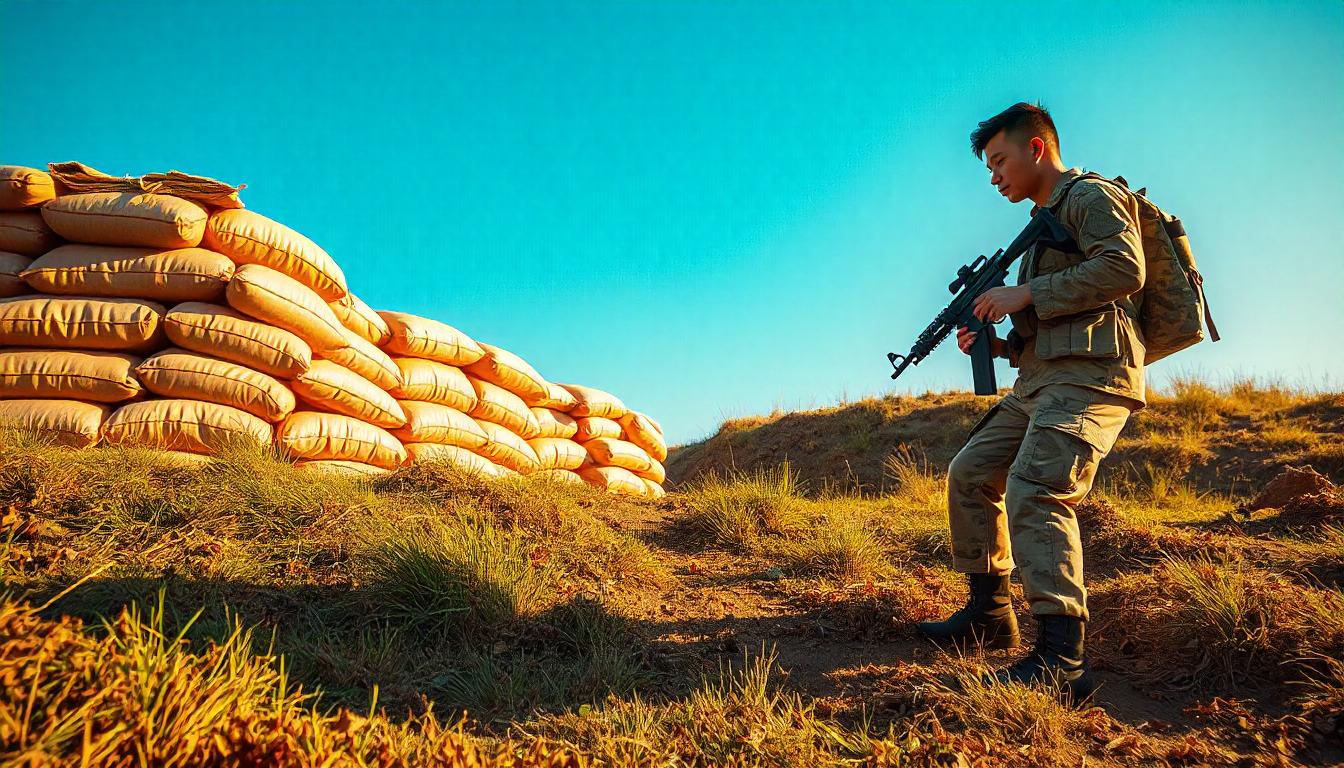Sand bags Emplacement has long been a crucial component in defense, security, flood prevention, and construction projects. These simple yet highly effective structures offer a range of applications, from safeguarding properties during natural disasters to reinforcing military positions.
In this article, we’ll explore the purpose, benefits, techniques, and practical considerations of Sand bags Emplacement, highlighting its relevance across various sectors.
What is Sandbag Emplacement?
Sand bags Emplacement refers to the strategic arrangement or stacking of sand-filled bags to create a barrier or protective structure. These barriers, often seen in military and flood control contexts, serve multiple purposes:
- Protection Against Flooding: Sandbag walls act as barriers that divert or hold back rising water levels, minimizing flood damage to properties and land.
- Defensive Military Use: Sandbags are used to create fortified positions, cover for personnel, and temporary bunkers. They offer protection against bullets, shrapnel, and other projectiles.
- Industrial and Construction: Sandbags provide stability and control erosion in construction sites, especially those in flood-prone or landslide-prone areas.
The flexibility, portability, and affordability of sandbags make them a preferred choice for quick, adaptable protection.
Types of Sandbags and Materials Used
While traditional sandbags are made from burlap or hessian, modern options include polypropylene or other synthetic materials that offer durability and resilience against various weather conditions. Each material has specific benefits:
- Burlap Sandbags: These are biodegradable, making them an eco-friendly option. However, they are less durable over extended exposure to elements and degrade over time.
- Polypropylene Sandbags: These synthetic bags are more durable and water-resistant, making them ideal for long-term use or in harsh conditions.
- Geotextile Bags: Often used in construction and erosion control, these bags are highly durable and resist damage from UV exposure and extreme temperatures.
Benefits of Sandbag Emplacement
1. Cost-Effective and Accessible
Sand bags are inexpensive, widely available, and easy to store, making them a practical solution for emergency situations. The materials needed—sand and bags—can often be sourced locally, reducing logistical costs.
2. Easy Deployment and Assembly
One of the greatest advantages of sand bags is their ease of use. They can be filled and stacked quickly with minimal tools and labor. During emergency situations, such as a flood, community volunteers or military personnel can rapidly deploy sandbag walls.
3. Versatile Application
Sand bags Emplacement can be adapted for various environments and terrains. Their size, shape, and positioning can be modified to suit specific needs, whether for a flood barrier along a riverbank or a fortified military position.
4. Effective for Erosion and Flood Control
Sandbags effectively absorb and redistribute the force of water, reducing soil erosion and protecting structures. Properly emplaced sandbags can redirect water flow and prevent landslides or mudslides in vulnerable areas.
Techniques for Effective Sand bags Emplacement
Proper Sand bags Emplacement involves more than simply stacking bags on top of each other. The following techniques maximize effectiveness:
1. Preparation and Filling
- Filling: Bags should be filled halfway to allow flexibility and easy stacking. Overfilling can make bags heavy, harder to manage, and less effective in forming a stable structure.
- Sealing: Tie the bags securely but leave some slack so the sand can shift as needed to create a firm base.
2. Stacking Techniques
- Layering: Lay bags in alternating directions (crisscross pattern) to increase stability and reduce gaps where water or other elements could penetrate.
- Pyramid Shape: For higher walls, use a pyramid shape where each layer slightly steps back, creating a sloped structure that resists collapse.
- Interlocking Layers: Stack bags in a way that creates interlocking layers, increasing overall strength and durability. This technique is commonly used in defensive structures.
3. Choosing the Right Location
For flood control, place sandbags in areas that maximize water diversion or redirection. In military and defensive use, position them to shield personnel, equipment, and entry points effectively.
4. Reinforcement
When necessary, additional reinforcement, such as geotextile fabric or plastic sheeting, can be added to sandbag walls to improve water resistance and durability. This can be particularly beneficial in extreme weather conditions.
Applications of Sandbag Emplacement Across Sectors
Military and Defense
Sand bags Emplacements have been a staple in military strategies for centuries. They provide essential cover for troops and allow for the quick establishment of fortified positions. Sandbags are often placed around machine gun nests, artillery positions, and observation posts to reduce casualties and enhance operational effectiveness.
Emergency Flood Control
Sandbags are a first-line defense during floods, protecting homes, infrastructure, and agricultural land from water damage. In communities prone to seasonal flooding, local governments often keep sandbags readily available for quick distribution and use.
Construction and Erosion Control
In construction, especially near rivers or in areas with unstable soil, sandbag walls control erosion and water flow. By diverting water away from vulnerable areas, sandbags prevent damage to foundations and infrastructure, ensuring that construction projects remain stable and safe.
Environmental Conservation
In coastal regions, sandbags are used to stabilize dunes and shorelines. Sandbag barriers prevent beach erosion and help maintain natural habitats for wildlife, especially in areas facing rising sea levels.
Limitations of Sand bags Emplacement
While effective, Sand bags Emplacement have limitations. They are a temporary solution that requires maintenance and, in some cases, replacement. In prolonged flooding or constant exposure to weather elements, sandbags can degrade, losing their integrity. Additionally, disposal of used sandbags, especially synthetic ones, can present environmental concerns.
How to Dispose of Sandbags After Use
Once sandbags have served their purpose, they need to be disposed of properly:
- For Contaminated Sandbags: In cases of flood control where Sand bags Emplacement may be exposed to pollutants, they should be treated as hazardous waste.
- For Uncontaminated Sandbags: The sand can often be repurposed in landscaping or construction, while biodegradable bags can be composted or left to naturally degrade.
Conclusion
Sand bags Emplacement is a tried-and-tested method for providing temporary but highly effective protection against natural and man-made threats. Whether safeguarding homes from floodwaters or fortifying defensive positions in military settings, sandbags remain an indispensable tool. Their versatility, ease of use, and low cost make them suitable for a range of applications, and their strategic placement can make all the difference in mitigating damage.
As long as proper techniques and maintenance are observed, sandbag emplacement will continue to be an essential resource in disaster management, defense, and construction for years to come.










